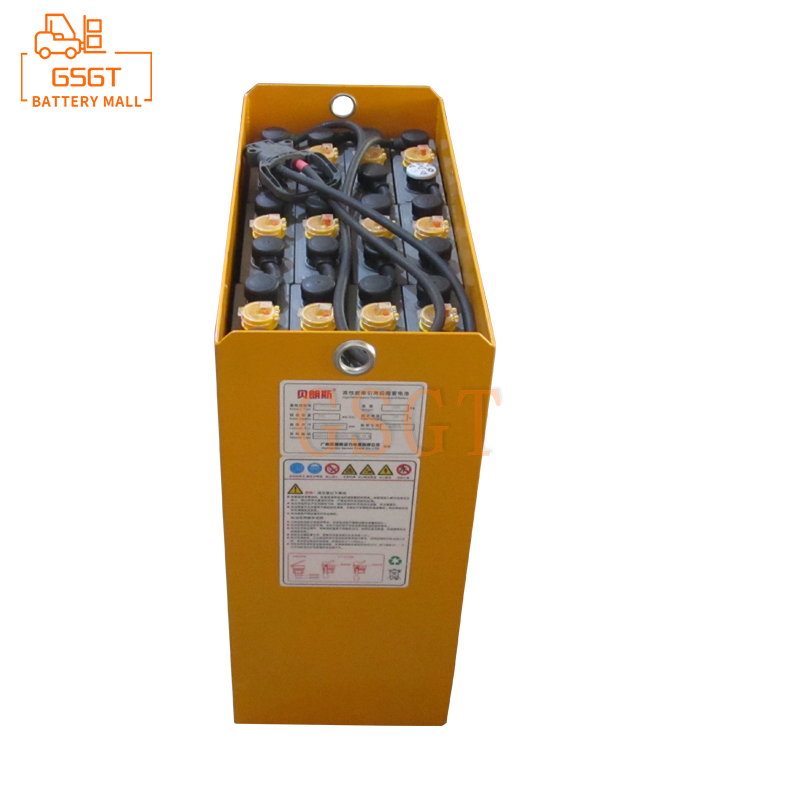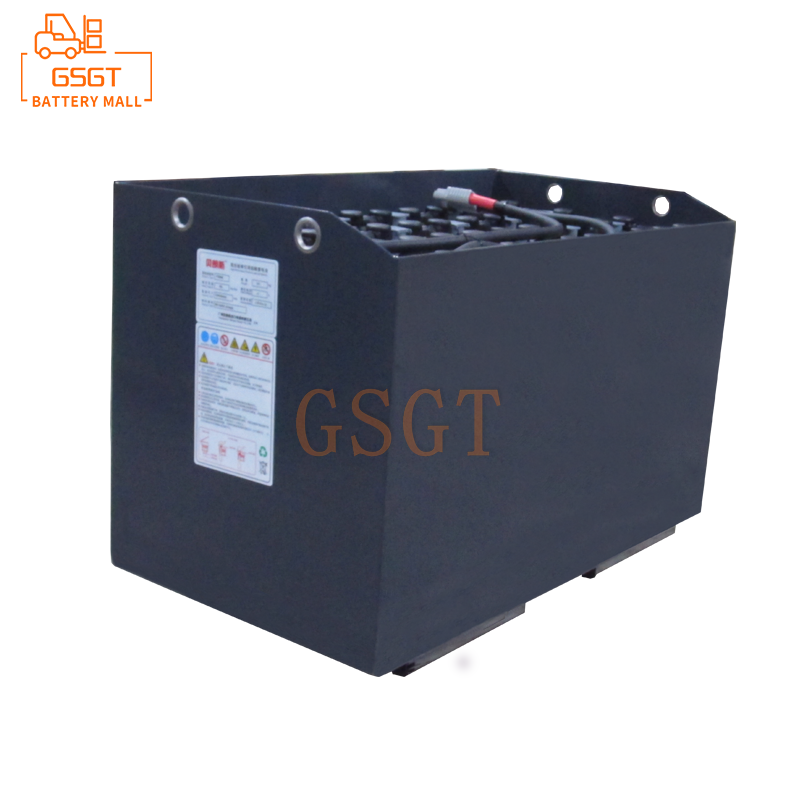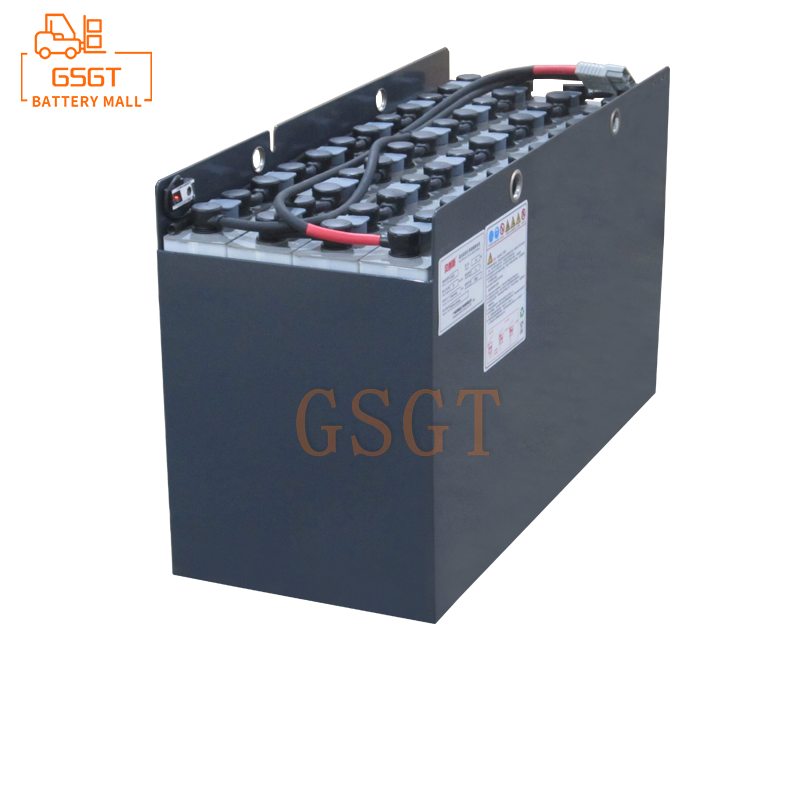Time:2025-04-16 10:23:25
Browse:550
The basic position of lead-acid batteries in the field of forklifts
In the choice of forklift power source, lead-acid battery occupies an important position for a long time. From the perspective of the global market, lead-acid batteries have deep roots in forklift power support with many characteristics. Its technology is mature, after a long time of development and application, stable and reliable performance, for forklifts such as equipment frequently used in industrial scenes, stability is a key factor to ensure the continuation of production operations. For example, in some large logistics warehousing centers, forklifts need to carry out a large amount of cargo handling work every day, and lead-acid batteries can continuously and stably provide power for forklifts to ensure the normal operation of forklifts under high-intensity work.
In terms of cost, lead-acid batteries have obvious advantages. Compared to other types of batteries, such as lithium-ion batteries, their relatively low raw material costs and simpler manufacturing processes make lead-acid batteries more attractive in terms of initial acquisition costs. For some limited budgets, especially small businesses or cost-sensitive industries, lead-acid battery forklifts have become the first choice. Data show that in industrial areas in some developing countries, more than 70% of forklifts use lead-acid batteries as a power source, which fully reflects its wide application in cost-sensitive markets.
The high share of lead-acid batteries in the global forklift market also benefits from their good applicability. It can adapt to a variety of different working environments, whether in high temperature outdoor loading and unloading sites, or low temperature cold storage storage space, lead-acid batteries can maintain a certain level of performance, providing stable power for forklifts. Moreover, after years of market cultivation, the after-sales service system of lead-acid batteries is quite perfect, convenient maintenance, and easy access to accessories, which further reduces the cost of use and worries of users, and strengthens its position in the forklift power market.
New opportunities brought about by the innovation of lead-acid battery technology
In recent years, lead-acid battery technology has made continuous breakthroughs, injecting new vitality into its sustainable development in the forklift industry. In terms of energy density improvement, researchers have significantly improved the energy density of lead-acid batteries by improving plate materials and electrolyte formulations. For example, the use of new lead alloy plates can increase the amount of active substances attached, thereby increasing the overall capacity of the battery. Some advanced lead-acid battery products, its energy density compared to traditional products increased by 20%-30%, which means that forklifts can run longer or handle heavier goods after a single charge, greatly improving work efficiency.
The extension of cycle life is also an important result of the technological innovation of lead-acid batteries. By optimizing the structure design and production process of the battery, the phenomena of plate vulcanization and water loss in the charging and discharging process of the battery are reduced, and the cycle life of the lead-acid battery is effectively extended. The cycle life of some high-end lead-acid battery products has been able to reach 1500-2000 times, which has been greatly improved compared with earlier products. This not only reduces the frequency of battery replacement and equipment downtime, but also reduces the cost of use in the long term.
The development of fast charge technology has also brought competitive advantages to lead-acid batteries. In the past, the lead-acid battery took a long time to charge, which affected the efficiency of forklift trucks. Nowadays, with the application of fast charging technology, charging time is greatly shortened. Some new lead-acid batteries can be quickly charged within 1-2 hours, close to or even partially exceeding the fast charging speed of some lithium-ion batteries. This technological breakthrough enables the forklift to be charged within a short rest period and quickly put into the next round of work, which is of great appeal to some busy logistics and industrial scenarios with tight time requirements.
Response and potential of lead-acid batteries under the change of market demand
With the increasing global awareness of environmental protection, and the increasingly stringent requirements for industrial emissions in various countries, the forklift industry is also facing the pressure of transformation to the green and low-carbon direction. In this context of changing market demand, although lead-acid batteries are not zero-emission power sources, their pollutant emissions during operation have been greatly reduced compared to traditional internal combustion forklifts. Moreover, with the continuous improvement of lead-acid battery recycling technology, its impact on the environment is gradually reducing during the entire life cycle from raw material acquisition to battery scrap recycling. For example, in some developed countries, a perfect lead-acid battery recycling network has been established, with a recovery rate of more than 90%, effectively reducing the environmental pollution of heavy metals such as lead.
In different industry scenarios, lead-acid battery forklifts also show unique applicability. In food, medicine and other industries with high hygiene requirements, lead-acid battery forklift trucks operate without exhaust emissions, will not cause pollution to the product, and meet strict hygiene standards. In some indoor warehousing logistics scenarios, such as e-commerce warehouses, forklifts operate frequently but the single operation distance is short, and the cost advantage of lead-acid batteries and good low-speed torque characteristics make it possible to efficiently complete the cargo handling task. In addition, for some small and medium-sized enterprises that are more sensitive to equipment procurement costs, the lower acquisition cost and use cost of lead-acid battery forklifts make them an economical and practical choice to meet the needs of logistics handling enterprises. With the rapid development of e-commerce, express delivery and other industries, the demand for forklifts in these scenarios continues to grow, providing a broad market space for lead-acid battery forklifts.
Challenges and competition facing the rise of lead-acid batteries
Although lead-acid batteries have many advantages and continuous technological progress in the field of forklifts, they still face fierce competition from other power technologies in the process of their development. As a new battery technology with rapid development in recent years, the application of lithium-ion battery in the field of forklift power is gradually increasing. Lithium-ion batteries have significant advantages such as high energy density, fast charging speed and long cycle life. For example, the energy density of lithium-ion batteries is usually 2-3 times that of lead-acid batteries, which makes it possible for forklifts equipped with lithium-ion batteries to achieve a lighter design while improving the driving range. Moreover, the fast charging performance of lithium-ion batteries is better, and some products can complete 80% of the power supplement in half an hour, greatly reducing the waiting time of forklifts and improving the efficiency of operations. In the high-end forklift market, especially in automated logistics warehouses with high performance and efficiency requirements, lithium-ion battery forklifts are gradually seizing market share with their excellent performance.
Fuel cell technology is also emerging as a potential competitor in the field of forklift power. The fuel cell forklift truck uses hydrogen as fuel and generates electric energy to drive the forklift truck through electrochemical reaction, which has the advantages of zero emission and short hydrogenation time. In some specific scenes with extremely demanding environmental requirements, such as ports, airports, etc., the advantages of fuel cell forklifts are particularly obvious. The hydrogenation process takes only a few minutes to complete the fuel supplement, compared to the charging time of both lead-acid batteries and lithium-ion batteries. Although the current cost of fuel cell technology is high, infrastructure construction is not perfect, but with the continuous progress of technology and large-scale application, its cost is expected to reduce, posing a potential threat to the lead-acid battery forklift market.
In addition, market awareness and policy guidance may also have an impact on the development of lead-acid batteries. Some consumers may be influenced by the publicity of emerging technologies and think that lithium-ion battery or fuel cell forklifts are the future, resulting in a bias against lead-acid battery forklifts. In terms of policy, in order to promote the development of new energy industry, some regions give more subsidies and policy support to lithium-ion battery or fuel cell forklifts, while paying less attention to lead-acid battery forklifts, which also restricts the further expansion of the lead-acid battery forklift market to a certain extent.
Comprehensive analysis of the potential impact on the forklift industry landscape
If the lead-acid battery can continue to maintain the trend of technological innovation, give full play to its own advantages, and effectively respond to challenges, then its position in the forklift industry is expected to be further consolidated and promoted. With cost advantages, lead-acid battery forklifts will continue to dominate the low-end market, meeting the needs of the majority of small and medium-sized enterprises and cost-sensitive industries, and maintaining a high market share. In terms of technology upgrading, with the continuous optimization of energy density, cycle life and fast charging technology, the gap between lead-acid battery forklifts and other power forklifts in performance will continue to narrow, and even surpass rivals in some specific application scenarios, so as to expand its application field and further expand market share. For example, in some small logistics distribution centers with low endurance requirements for forklifts, but high requirements for cost and maintenance convenience, lead-acid battery forklifts may gain more market favor by virtue of their cost-effective advantages.
However, if lead-acid batteries lag behind in technological innovation and cannot effectively respond to the challenges of competitors such as lithium-ion batteries and fuel cells, then the landscape of the forklift industry may change greatly. With its advanced technical performance, lithium-ion battery and fuel cell forklifts will dominate the high-end market and areas with high environmental protection requirements, and their market share will continue to expand. Lead-acid battery forklifts may gradually be marginalized, and can only be difficult to maintain in some niche markets with extremely sensitive costs and low performance requirements. The technical development direction of the entire forklift industry will also be more inclined to lithium-ion battery and fuel cell technology, and the R&D investment and market layout of enterprises will be adjusted accordingly, and the influence of lead-acid batteries in the field of forklift power will gradually weaken.
The rise of forklift lead-acid batteries has an important impact on the reshaping of the industry landscape, but the final result depends on its performance in many aspects such as technological innovation, market competition and meeting challenges. In the future, lead-acid batteries need to constantly break through the technical bottleneck, combined with changes in market demand, and find their own positioning in order to seize the opportunity in the fierce market competition and occupy a favorable position in the forklift industry pattern.

$1105

$3075

$2290

$1790

MESSAGE
Professional And Efficient
Security
Affordable Price
Professional Services